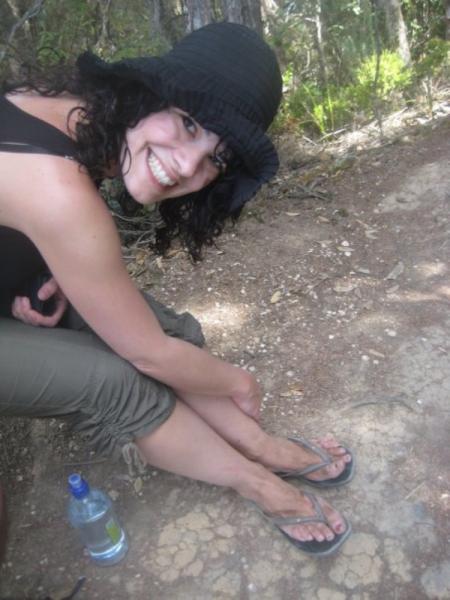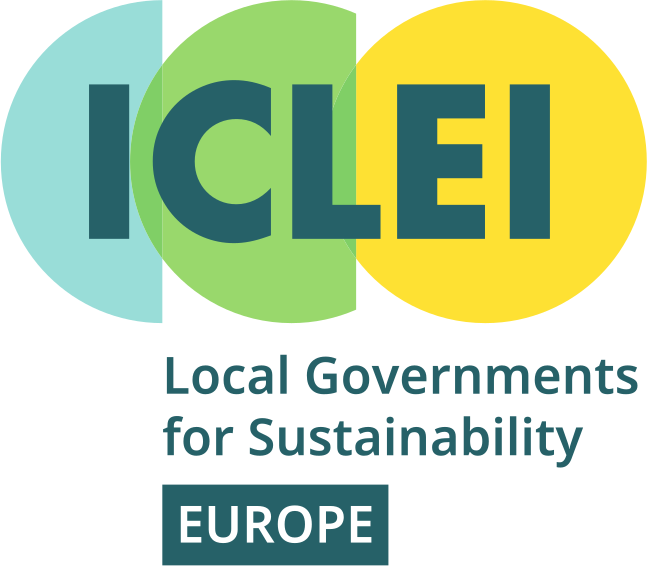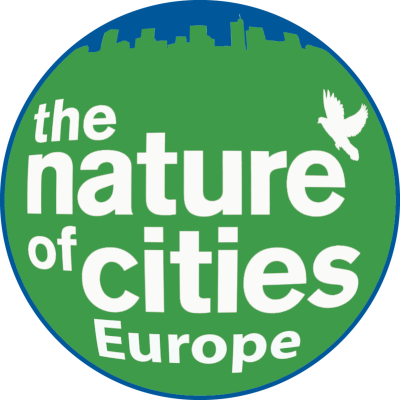
What is NetworkNature Reads?
#NetworkNatureReads is inspired by #ReadingRainbow and the #NewYorkTimes #ByTheBook series, both of which spread a love of reading by highlighting standout books and the people who love them. Our goal is to do the same, but with a #naturebasedsolutions flavor. Every month, we will feature one book selected by a NetworkNature member. We believe that literature widens perspectives and can foster connection between human and environmental communities. Read The Great Sea by Uvavnuk if you aren’t sure what we mean.
This month’s interviewee is Dimitra Xidous, a poet and researcher committed to exploring links between the built environment and well-being.
Want to feature a book on NetworkNature Reads? Contact hello@networknature.eu to find out how!
Book: The Poetics of Space by Gaston Bachelard
Tell us about yourself! What role do nature and reading play in your life?
I could begin anywhere, but for starters: I am a poet, and also, I am a researcher. In 2011, I moved to Ireland to spend a year writing poetry. I wanted to give myself time, and the undivided attention that establishing and deepening an artistic practice demands. In the time since, I have published two poetry collections, several essays, and, with the support of a 2019 Markievicz award, a collaboration with poets Kimberly Campanello and Annemarie Ni Churreain is due to be published by The Salvage Press before the end of this year (something that has been a long time coming, and for which I am very excited!).
All at the same time, I am a researcher in Trinity College Dublin (splitting my time between TrinityHaus, in the School of Engineering and the Centre for Social Innovation, in The Business School). Over the last decade, I’ve been involved in projects that interrogate the role of the built environment in supporting health and well-being across the lifespan. Focussed on the neighbourhood scale, projects have been in the area of dwellings, hospitals, long-term care settings, and, more recently, nature-based solutions (NbS). As a researcher, I have zeroed in on how lived experience shapes and frames our understanding of space(s) and place(s). In all of this, the role of language (both its technical components and its emotional aspects) is of deep concern.
I have read my entire life. One of my favourite opening lines to a novel is “Many years later, as he faced the firing squad, Colonel Aureliano Buendía was to remember that distant afternoon when his father took him to discover ice.” At 14, I encountered Leonard Cohen for the first (but not the last!) time, and through him, Federico Garcia Lorca (and through Lorca, duende ).
When it comes to nature, my relationship in and to it is wrapped up in a childhood split between cozy Canadian autumns and deep winter snow, and then, with a move to Greece, a shift of experience. I remember olive groves, and fig trees, and (most importantly) orange trees that no longer exist, except in my mind – my grief for those trees that no longer exist is vast. As time has moved on, and I have settled into adulthood, I have found myself describing my relationship to and with nature as ‘clumsy’. I have a great story of myself that involves a 20km hike in New Zealand’s north island in flip-flops (I was so stupid – and so lucky nothing bad happened to me!).
Which book did you pick and why?
I have picked Gaston Bachelard’s ‘The Poetics of Space’. I love to hold this book in my hands. Thinking of this book, I have always imagined my reading (the embodied experience of my reading) as mirror (a mirror that stretches across and back into time) to Bachelard’s writing – my eyes running down a page (now) bring to mind (which is to say, it is easy to imagine) the movement and action of his hands writing things into existence (then). With this in mind, my reading of ‘The Poetics of Space’ has been framed not so much by the ‘order of things’ – as presented in the structured table of contents – but rather, as a function of my mood and desire, across space and time. Over the last several years, sitting on planes (and always in a window seat), I have read as I pleased, and it suited me to read and experience it this way – so disconnected, so out of touch, and so out of order while in transit, from one place to another. Bachelard’s elegant writings on the phenomenology of roundness, nests, and the miniature, and so much more, all zero in and out on how we experience space(s), and the function of language (and by extension, the role of poets) in helping us ‘see’ into (and also out of) the world.
Can you share a specific moment from the book that resonates with you personally? How does it connect to your work with Nature-based Solutions projects?
Because I find myself thinking a lot about time – in both horizontal (meaning: durational) and vertical (meaning: deep) terms – I have returned, most recently, to re-reading the ‘Intimate Immensity’ chapter. Time is everywhere in ‘The Poetics of Space’ and for me, this passage resonates, not only for how it treats time (to and from a point of perspective – ‘with-me / with-us’) but also time (expanded) beyond the point of it/the self/this perspective, in order to acknowledge the ‘before-me / before-us’ . Look at this!:
“But who knows the temporal dimensions of the forest? History is not enough. We should have to know how the forest experiences its great age; why in the great reign of the imagination, there are no young forests. I myself can only meditate upon things in my own country, having learned the dialectics of fields and woods from my unforgettable friend, Gaston Roupnel. In the vast world of the non-I, the non-I of fields is not the same as the non-I of forests. The forest is a before-me, before-us, whereas for fields and meadows, my dreams and recollections accompany all the different phases of tilling and harvesting. When the dialectics of the I and the non-I grow more flexible, I feel that fields and meadows are with me, in the with-me, with-us. But forests reign in the past. I know, for instance, that my grandfather got lost in a certain wood. I was told this, and I have not forgotten it. It happened in a past before I was born. My oldest memories, therefore, are a hundred years old, or perhaps a bit more.”
There is so much to get excited about here and then, unravel. I love the idea that within each of us there exist memories that are older than us, that are before-us, and yet, also, because Bachelard is making pointed effort to draw a line of connection between himself and his grandfather, these memories are also part-of-us, in so far as we (can and should) imagine ourselves not apart from time, in neither the horizontal nor vertical dimension; yes, I think this is the point being made here, and it has real implications for place-making, and more precisely, how we think and go about the processes of long-term stewardship in fostering and making sense of place, over time. His noting of things having happened ‘before he was born’ speaks to the value of knowledge that is already in existence and gets passed down and along family (and by extension, community) lines over time. With time, we come to know things, we come to know them intimately; over time, I have come to see intimacy as a necessary and fundamental aspect of long-term stewardship.
Despite the shortness of this passage, the passage of time expressed is significant. Bachelard does beautiful, gentle work in establishing the spatial dimensions of (deep) time (and the inter-relationships in and among things). Nothing is static; change is constant. Urban spaces, buildings, and the living (human and non-human) things that inhabit them are always growing, ageing, changing, and evolving over time . So, it isn’t hard to imagine the oldest helping to make sense of the places in which we dwell and aim to live good, meaningful lives. Implicit in this passage, and indeed much of what makes ‘The Poetics of Space’ such a pleasure, for me, is that everything is connected to everything else. For me, the consideration of time in these ways is necessary for the kind of transformative change we imagine and aspire to achieve via nature-based solutions.
In what ways do you see the themes or lessons from the book aligning with the goals of conservation and the challenges we face in combating biodiversity loss today?
To draw a line between the past of this book (first published in 1958, 13 years after the end of World War II) and some present-day thinking that centres around how our values shape our understanding(s) and influence our relationship(s) to and with nature, there are interesting parallels in thinking between ‘The Poetics of Space’ and the work of the Intergovernmental Science-Policy Platform on Biodiversity and Ecosystem Services (IPBES).
The IPBES values assessment provides a useful way of framing our relationship(s) to nature:
“living from nature emphasizes nature’s capacity to provide resources for sustaining livelihoods, needs and wants of people, such as food and material goods; living with nature has a focus on life ‘other than human’ such as the intrinsic right of fish in a river to thrive independently of human needs; living in nature refers to the importance of nature as the setting for peoples’ sense of place and identify; and finally, living as nature sees the natural world as a physical, mental, and spiritual part of oneself” .
Returning to the passage on the temporal dimensions of forests, I want to show some thinking – reflecting on how each line (or part of) might align with one or more ways of thinking and relating to nature (it may not be perfect, and each line of thinking is a springboard into deeper writing!):
“But who knows the temporal dimensions of the forest? (living in / living as). History is not enough (living from). We should have to know how the forest experiences its great age (living from / living with / living in / living as); why in the great reign of the imagination, there are no young forests. I myself can only meditate upon things in my own country (living in), having learned the dialectics of fields and woods (living with) from my unforgettable friend, Gaston Roupnel. In the vast world of the non-I (living with), the non-I of fields is not the same as the non-I of forests (living with). The forest is a before-me, before-us (living with / living as), whereas for fields and meadows, my dreams and recollections accompany all the different phases of tilling and harvesting (living from / living in). When the dialectics of the I and the non-I grow more flexible, I feel that fields and meadows are with me, in the with-me, with-us (a shift from living from and in, to living with) . But forests reign in the past (living in). I know, for instance, that my grandfather got lost in a certain wood (living in). I was told this, and I have not forgotten it (living in). It happened in a past (living in) before I was born (living as). My oldest memories (living in), therefore, are a hundred years old, or perhaps a bit more (living as).”
Both the researcher and poet in me are satisfied (for now). I have attempted to draw things together – to make and perhaps also, to reinforce a point: I like the IPBES values typology (and I have used it to better understand the ways in which tangible and intangible elements of the world are gathered (into), carried (within), and expressed (out) of each of us as part of workshops that I have run where we explore our relationship and reflect on our connections to nature with / in time ). In all of this, (and, here, I repeat myself, in order to come full circle) the role of language (both its technical components and its emotional aspects) is of deep concern. Over time, I have laboured to draw the poetic gaze and research gaze together, into a collective ‘way of being and seeing’ in and with the world; for me, the function of (and the need for) both is crucial for doing good work towards addressing current challenges (of diversity loss, among others), and beyond (how better to live as part of nature, instead of separate from).
If you were recommending this book to a colleague or a friend within the conservation community, what key takeaway or message would you highlight?
Spending time with this book is to reflect deeply about the ‘inside’ and the ‘outside’ of things, the distinction and the dissolution between the interior (sense of being) and the exterior (relationship in and with the natural world) with and in time; in a manner of speaking, everything comes from nothing, and, having come from nothing, everything then, is connected to everything else – all it takes is a small shift in perspective (the tiniest one you can possibly imagine), and all the world transforms.
Read a longer form version of this article here!
By Dimitra Xidous, Research Fellow, Trinity College Dublin











